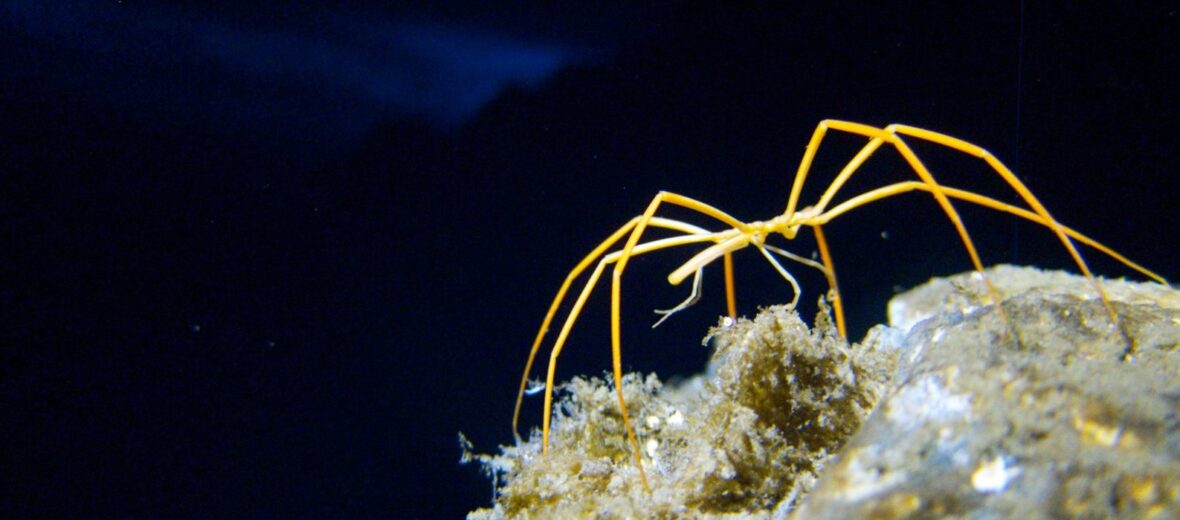
The sea spider can be found in oceans all over the world, from the warm to the frigid. They can also be found from coral reefs to the deep ocean. And, yes, you heard that right, all you arachnophobes, spiders in the sea. But relax, these aren’t true spiders, like the kind you see on land. So you don’t need to worry about walking through their webs and instantly becoming a kung fu expert. There are approximately 1,500 known species of these critters. And they can get pretty good sized. These creatures are all at risk due to pollution, habitat loss, and human interference.
First the Stats…
Scientific name: Pantopoda
Length: Up to 20 inches
Lifespan: Unknown
Now on to the Facts!
1.) These critters have been found living in tide pools and at the crushing depths of 23,000 feet!
2.) They may not be true spiders but they are members of the Arthropod family. So they aren’t too far removed.
3.) Sea spiders can be tiny too. Some measure only 0.03 of an inch across.
4.) The colder the water, the bigger these creatures seem to get.
5.) Sponges, sea anemones, jellyfish, and other critters are preyed upon by sea spiders.
But wait, there’s more on the sea spider!
6.) Like something out of a sci fi film, they will use their proboscis to literally suck the life out of their prey.
7.) Males carry the eggs, not the females. After insemination, the male will carry the fertilized eggs via his ovigers (egg-carrying legs), till they hatch.
Did you know…?
Their guts reside in their up to 6 pairs of long legs.
8.) The oxygen they require to live passes through their exoskeleton and into their tissues. This is because they don’t have gills, lungs, or a respiratory system. This method of respiration is called gut peristalsis.
9.) Sea spiders have been around for approximately 500 million years.
10.) Considering their method of predation, these “spiders” are actually considered parasites, rather than predators.
Now a Short Sea Spider Video!
Be sure to share & comment below! Also, check out the Critter Science YouTube channel. Videos added frequently!
Want to suggest a critter for me to write about? Let me know here.



